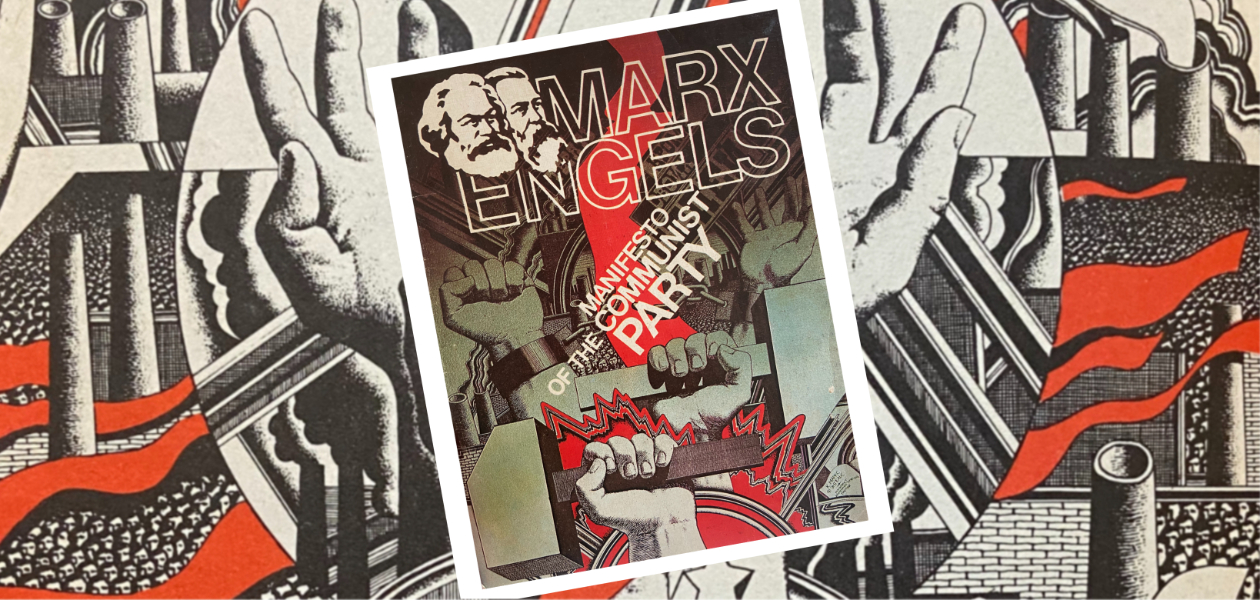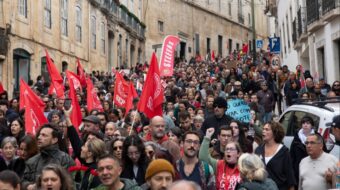
“Let the ruling classes tremble at a communist revolution. The proletarians have nothing to lose but their chains. They have a world to win. Workers of all countries, unite!”
These words, written by Karl Marx and Frederick Engels, were first published in The Communist Manifesto on Feb. 21, 1848, 175 years ago.
Since its publication, the Manifesto has become one of the most widely read and influential books in human history—second to Charles Darwin’s On the Origin of Species. It is considered a World Heritage document by the United Nations Educational, Scientific, and Cultural Organization, which adopted the book in its Memory of the World Register, an initiative designed to “preserve humanities heritage against the ‘ravages of time’ and ‘collective amnesia.’”
And as for Karl Marx, he’s considered the “most influential philosopher” in human history. His ideas “redefined geopolitics and shook up the world order,” in the words of Oxford philosophy professor Jonny Thomson.
Around the globe this Feb. 21, as part of #RedBooksDay2023, tens of thousands of people will publicly read The Communist Manifesto—or another Red Book—and engage in discussion and dialogue about capitalism, socialism, and communism.

In many ways, the Manifesto was a product of its times. Just months before its publication, revolutions had swept through Europe. Ordinary people—the working class—in Italy, France, Germany, Hungary, and elsewhere were rising up. They were demanding democracy and liberation. It was a “springtime of the peoples.”
Throughout the late-19th and early-20th centuries, the Manifesto inspired countless millions to fight for a classless, egalitarian society free of capitalist exploitation, racism, and war.
By the early-20th century, socialist and communist parties had been formed around the world. One of those groups, the Russian Social-Democratic Labour Party, known as the Bolsheviks, became the first Communist Party to win state power.
Marxist and Communist revolutions continued winning victories in the decades ahead. By mid-century, one-third of the world’s people were governed by Communist Parties. Another one-third was in the throes of revolutions for colonial independence and national liberation, often led by Communists.
Socialism was undeniably on the ascent.
As Marx and Engels predicted, for a brief moment in world history, the ruling classes did in fact tremble.
Marxism USA
In the United States, the Communist Party USA was born in 1919. In the belly of the capitalist beast, it bravely led struggles for workers’ rights, African American equality, peace, internationalism, and socialism. Often, its members were harassed, beaten, jailed, and deported. Some were murdered.
The party helped to found and lead countless CIO unions, including the Steelworkers and Autoworkers. It led the charge in defense of the Scottsboro Nine. It built Black Popular Front organizations, such as the National Negro Congress and the Southern Negro Youth Congress.
It sacrificed during World War II—on and off the battlefields. An estimated 15,000 CPUSA members served in the Armed Forces during the war against fascism, while thousands more helped to win the fight for wartime production on the Homefront.
After the defeat of fascism, Communists and their allies were once again targeted as the Red Scare and Cold War heated up. Hundreds of Communists were thrown in jail for teaching and advocating Marxism-Leninism. Thousands more were harassed, intimidated, followed by the FBI, and, again, deported.
Yet, like Communists everywhere, they persevered. Throughout the 1950s, Communist-led groups, such as the Civil Rights Congress, the Council on African Affairs, the International Workers Order, the National Negro Labor Council, and the Jefferson School of Social Science, among others, continued to advocate for African American equality, Black liberation, immigrant rights, workers’ rights, peace, and socialism.
PICK UP A COPY OF THE COMMUNIST MANIFESTO FROM INTERNATIONAL PUBLISHERS.
After the worst civil liberties abuses of the McCarthy period, by the early-1960s Communists decided to focus their energy on youth and students. They embarked on a wildly successful series of college and university speaking tours. In collaboration with campus groups—and various free speech movements—they challenged the intellectual straitjacket of anti-communism. By 1964, the W.E.B. Du Bois Clubs were formed, which helped to lead many of the most important fights for civil rights, peace, and free speech—on and off campuses.
Communists also helped to lead and initiate many of the most important campaigns in the fight for peace during the U.S. war in Vietnam. Marxist historian Herbert Aptheker led a delegation to Hanoi in 1965. Considered the “most dangerous Communist in the United States” by J. Edgar Hoover, Aptheker returned to tens of thousands of students packed into college and university auditoriums to hear his first-hand accounts.
Other Communists, two of the Fort Hood Three, became the first G.I.’s to refuse to deploy to Vietnam and thereby helped spark the genesis of the anti-war movement within the military.
Just a few years later, the worldwide campaign to free Communist Angela Davis emerged, bringing international attention to a racist political frame-up. With the aid of world socialism, Davis was freed and later the National Alliance Against Racist and Political Repression was born.
The reddest of Red Books
It is exactly this history and internationalism that organizers have in mind this Feb. 21, international #RedBooksDay2023, a day to commemorate and celebrate The Communist Manifesto and the contributions of Communists to the struggle for democracy.
Started on Feb. 21, 2020, #RedBooksDay was initiated by LeftWord Books and the Indian Society of Left Publishers. During the first #RedBooksDay, 30,000 people from South Korea to Venezuela collectively, publicly read the Manifesto.
The largest number of readers of the Manifesto was in the Indian state of Tamil Nadu, where the publishing house Bharathi Puthakalayam and the Communist Party of India (Marxist) read to 10,000 people. The Manifesto was also read in Brazil, Cuba, South Africa, and Lebanon, among other places.
After this initial success, the Indian Society of Left Publishers formed the International Union of Left Publishers (IULP), which International Publishers is a part of. Since its founding, the IULP has produced several joint books. This year’s book will be a collection of the writings of Ruth First, a leader of the South African Communist Party brutally murdered by the apartheid regime.
#RedBooksDay2023 is an initiative of the IULP, but organizers hope it will become part of a broader global calendar of annual cultural events. Check out redbooksday.iulp.org/ for more details.
The Michigan Communist Party, in collaboration with Nox Library, held a #RedBooksDay event this past weekend. Let People’s World know what events you have planned.
Organizers are encouraging activists to read any Red Book in public or online.
What Red Book will you read this year?
People’s World has an enormous challenge ahead of it—to raise $200,000 from readers and supporters in 2023, including $125,000 during the Fund Drive, which runs from Feb. 1 to May 1.
Please donate to help People’s World reach our $200,000 goal. We appreciate whatever you can donate: $5, $10, $25, $50, $100, or more.












